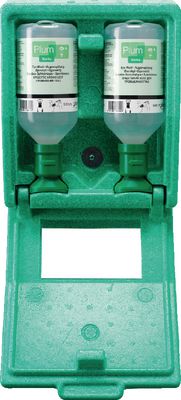Understanding the basic principles of what to do in an emergency is vital for handling a potential crisis. This Post tries to reiterate some of the fundamentals that all of you should have from your experiences in first aid courses or your daily life and tries to teach a practical approach to first aid that everyone can remember and follow on any confidence level.
The fight or flight response is an automatic psychological reaction everyone experiences in high-stress or frightening situations. The perception of thread activates the sympathetic nervous system and triggers an acute stress response that prepares the body to fight or flee.
This same response kicks in when we are confronted with an emergency: Some people leave the scene, and some jump right in. Both reactions are problematic in their own way. The first one is obvious to most. Leaving a person in need alone is something we should not do. The second one is less obvious. The fight response leads to people helping others no matter what. This can be detrimental if secondary dangers are involved, and a rescue mission can turn into an accident with even more people involved than before.
So first things first: Before helping someone, make sure you stay out of harm’s way yourself.
Emergencies are highly stressful situations. Naturally, the question emerges: What can I do when an accident happens? We answer this question as follows.
Make sure to involve others!
This is a simple way of doing what needs to be done to get a successful help mission on the way. Others can take care of the things that I do not remember or the things that I’m afraid of, and thanks to the fight or flight response, you will likely find someone ready to jump in and help without hesitation.
Please study the pictograms listed here very carefully. Here you will find the most important information in the event of an emergency.
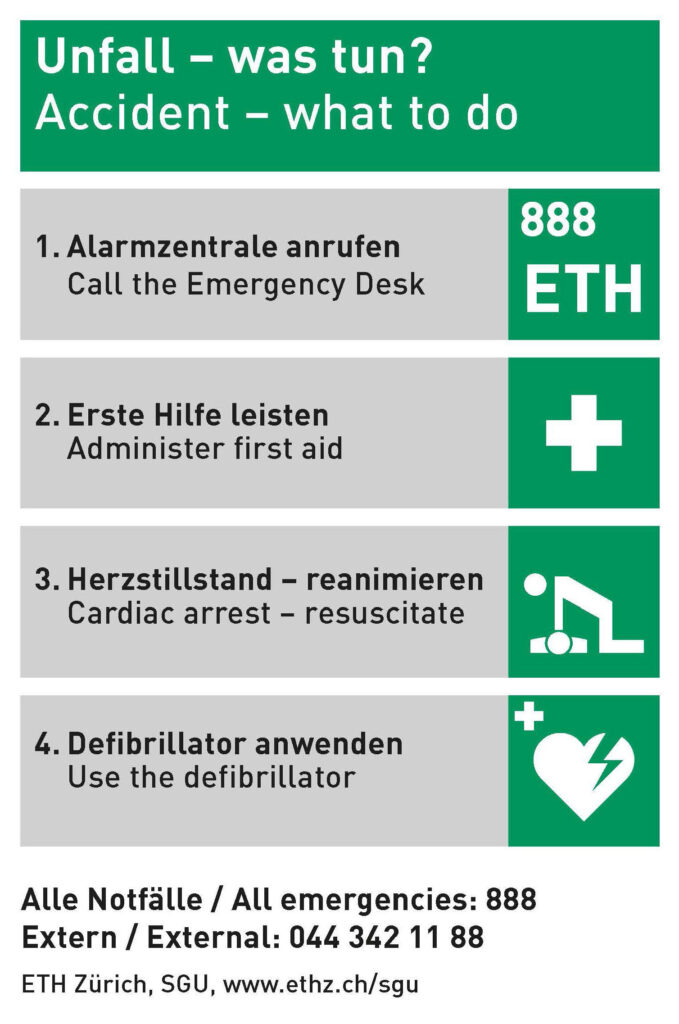
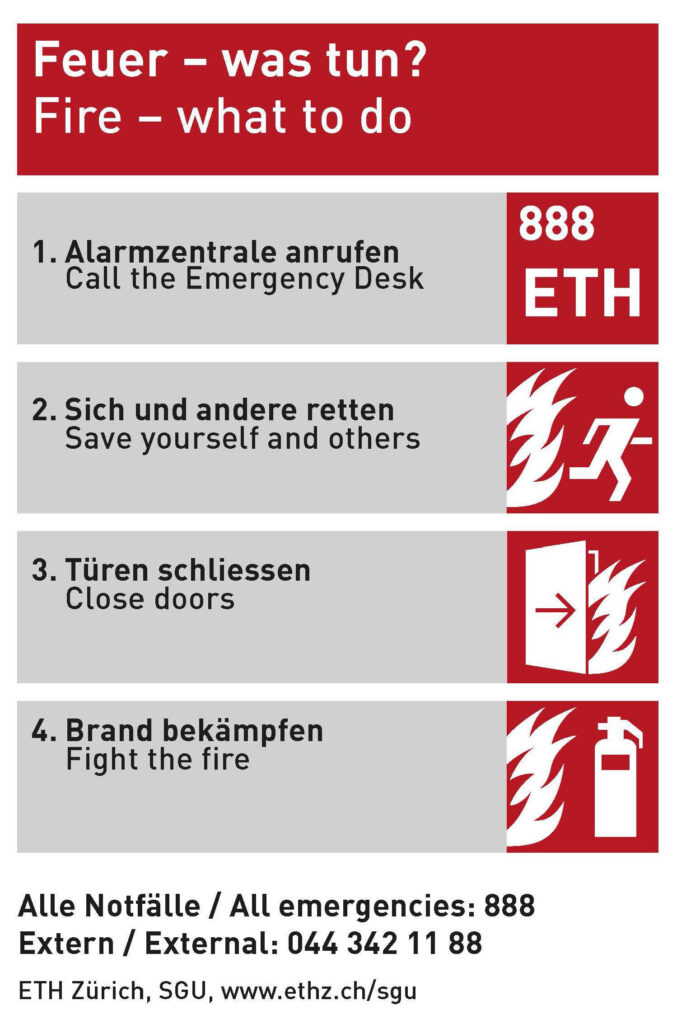
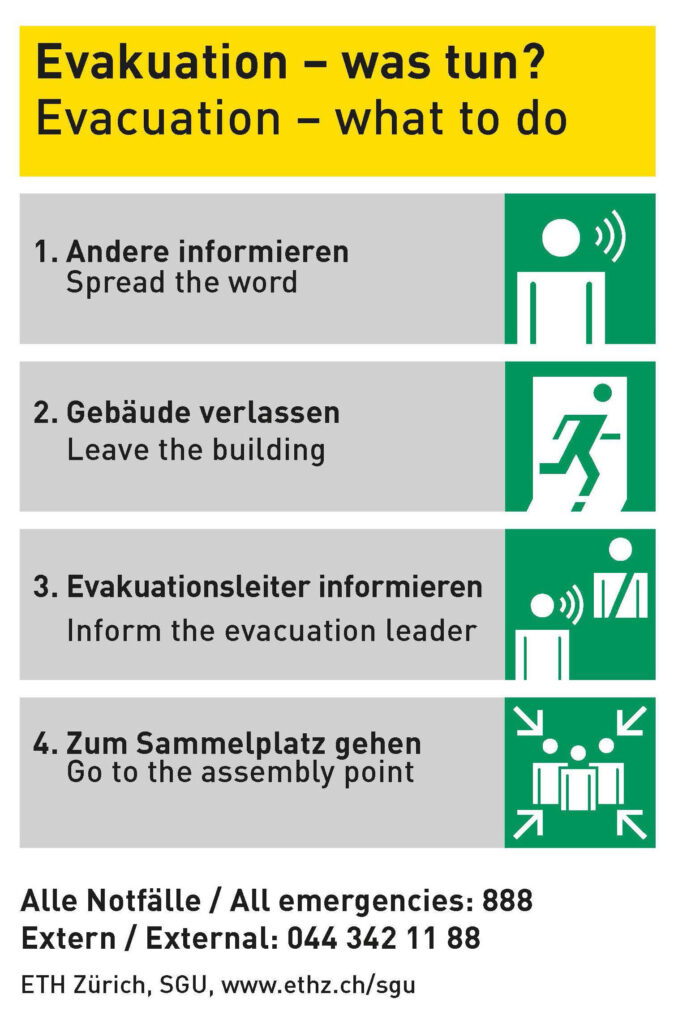
Minor injuries and, in particular, severe bleeding should be treated as first aid by the persons immediately on the scene. Easily accessible first aid kits are available in the Raplab, which can be used to treat injured people.
Before you start working, please familiarize yourself with the areas and report to the responsible person if you used something from the first aid kit. This procedure ensures that things like bandaids and disinfectants get replaced immediately. The content of the first aid kits ist listed in the picture below.
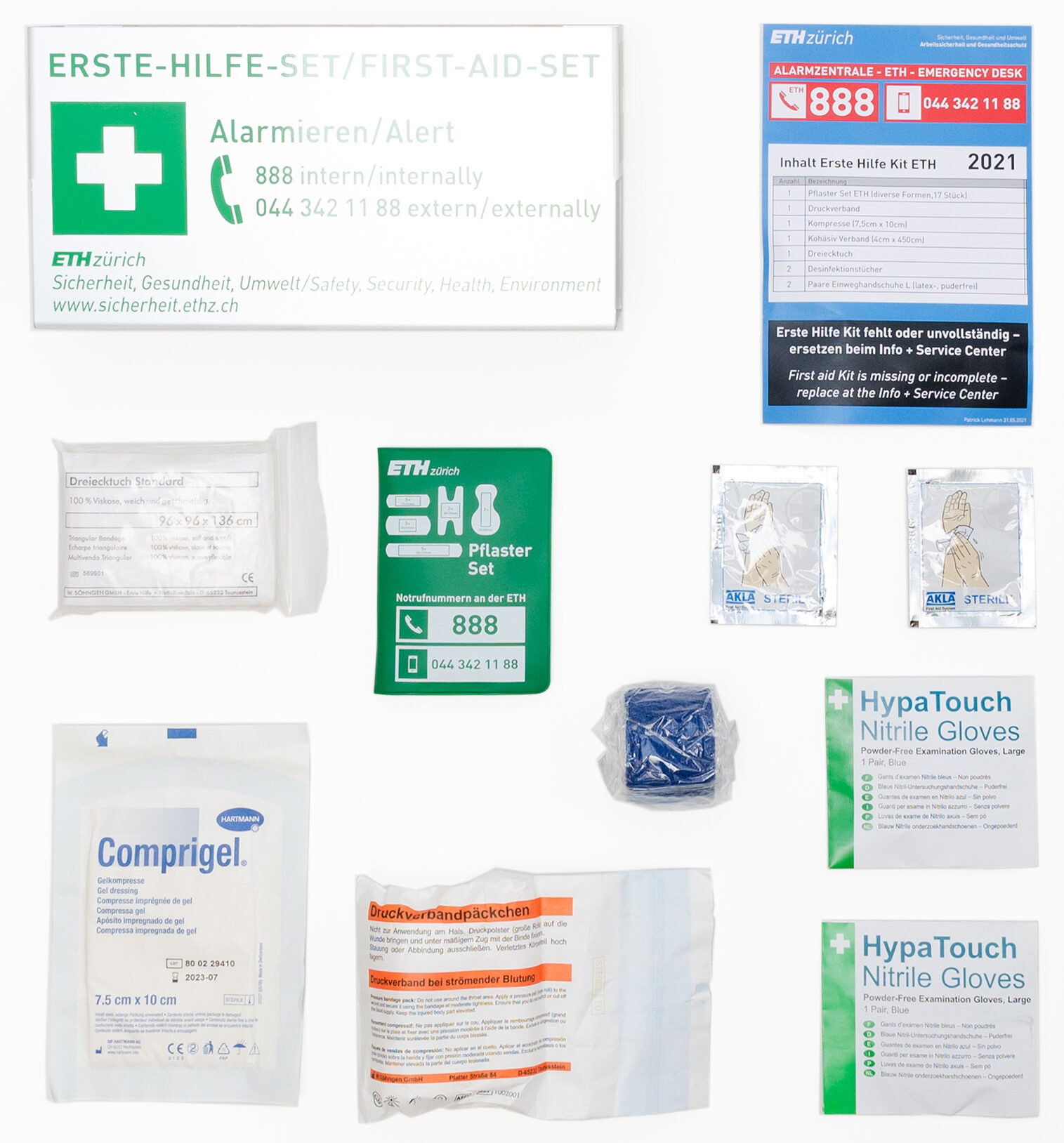
If chemicals or small particles get into the eye despite wearing safety goggles, these must be rinsed out immediately. Eye rinse stations are located in the exact locations of the first aid kits.
Rinse your eyes with the whole bottle in the unlikely event of getting some dust or debris in your eyes. Report any use to the workshop responsible person immediately to ensure that the station gets replaced. Once opened, the bottles need to be disposed of due to hygienic concerns.
